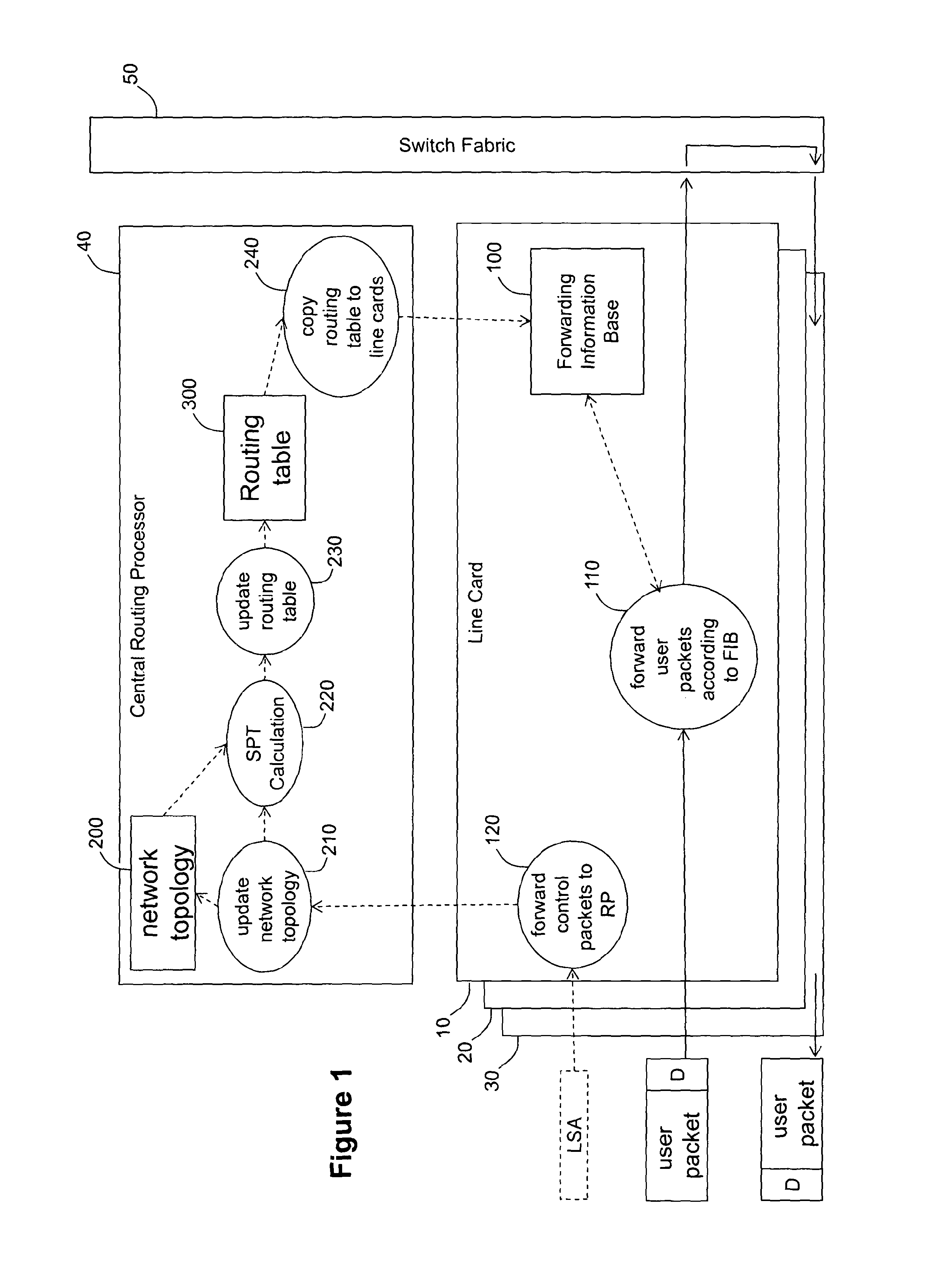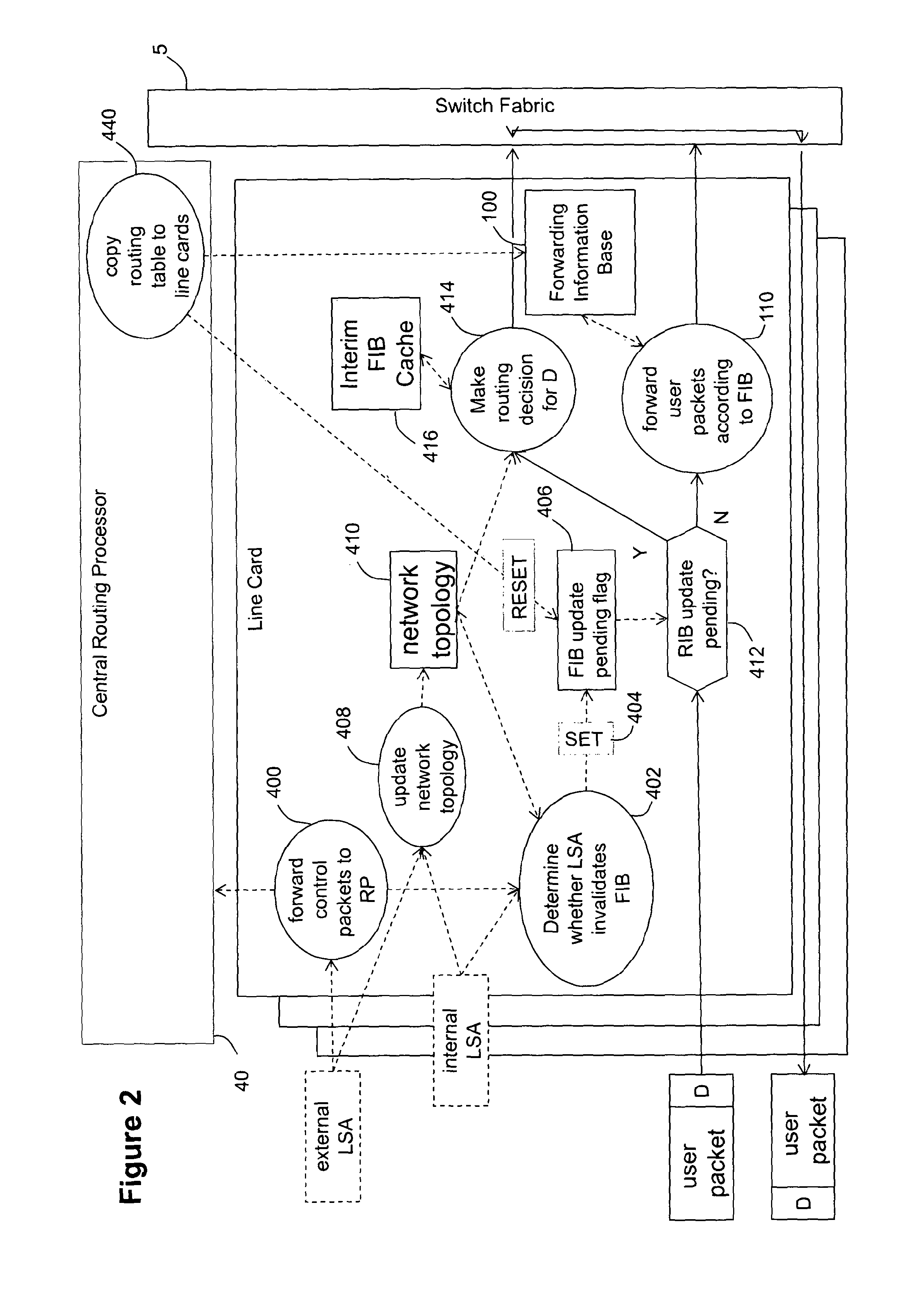Packet network routing
a packet network and packet technology, applied in the field of packet network apparatus and methods, can solve the problems of packets to be dropped by the network, delay or loss of packets can be very expensive, and the extra processing required to generate interim routes is only carried ou
- Summary
- Abstract
- Description
- Claims
- Application Information
AI Technical Summary
Benefits of technology
Problems solved by technology
Method used
Image
Examples
Embodiment Construction
[0026]A conventional internetwork router (FIG. 1) comprises a card chassis (not shown) offering slots in which various types of electronic system boards (known as cards) are inserted. The various types of cards include line cards (10,20,30) which expose one or more physical ports onto which communication lines (e.g. optical fibres) can be connected. A second type of card is a route processor card 40 which performs centralised computations and management functions for the router. In particular, on the basis of network characteristic information packets received from the network via the line cards, the route processor card 40 calculates a network, topology and, from that, a shortest path tree to each node in the network. A third type of card is a switch fabric card 50 which routes data between line cards in accordance with routing information applied to the data by the line cards. The chassis provides physical connectors which connect to mating connectors on the back of the cards. The...
PUM
 Login to View More
Login to View More Abstract
Description
Claims
Application Information
 Login to View More
Login to View More - R&D
- Intellectual Property
- Life Sciences
- Materials
- Tech Scout
- Unparalleled Data Quality
- Higher Quality Content
- 60% Fewer Hallucinations
Browse by: Latest US Patents, China's latest patents, Technical Efficacy Thesaurus, Application Domain, Technology Topic, Popular Technical Reports.
© 2025 PatSnap. All rights reserved.Legal|Privacy policy|Modern Slavery Act Transparency Statement|Sitemap|About US| Contact US: help@patsnap.com



